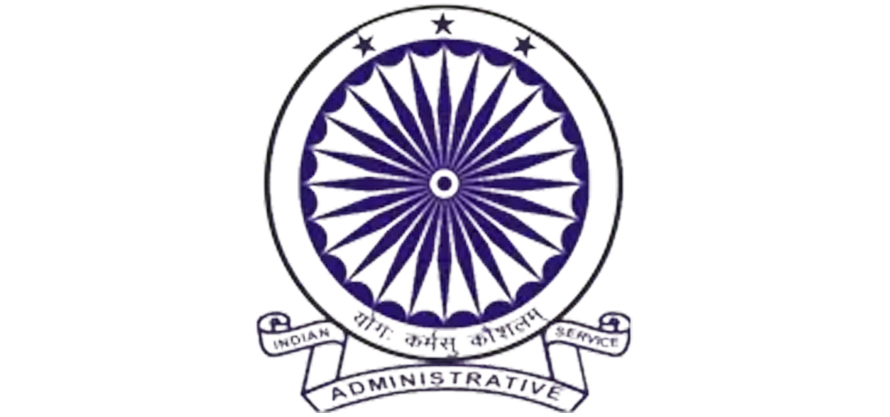IAS stands for Indian Administrative Service. It is a civil service in the country of India. The IAS officers are the highest level of Indian public servants, who work mainly in governmental organisations, and they form a layer between top-level administration and ordinary citizens. Recently IAS Officers have also taken charge of many large corporations in India. It is not uncommon for people to acquire skills that can be very useful as an IAS Officer such as an MBA Degree or Law Degree.
What is the qualification for IAS?
To qualify for the IAS a candidate, in the first instance, has to pass the examination (Civil Services Examination) held by the Union Public Service Commission (UPSC). Thereafter, he/she has to be recommended for admission by the Union Ministry of Personnel. Once appointed, an officer serves ‘at will’ in whichever state/UT or Union Territory department where he/she is posted, and normally is transferred every 2-3 years. There are a total of 3 service commissions: UPSC (Union Public Service Commission), MPSC (Union Public Service Commission) and MHA(Ministry of Home Affairs).
IAS officers are selected through a multi-stage competitive exam consisting of different sections with varying time limits. The exam is held twice in a year: (i) in the months of May–July and December–January before being cycled again. The time limit for all sections is 3 years.
The duration of courses can be different to that of the exams. For example, officers who have completed the prescribed service time limit in one service may be eligible for reassessment, if they had continuously served above the prescribed time-limit in a subsequent service.
Officers qualifying through first-preference are called ‘group A’ officers while those qualifying through second preference are called ‘Group B’ officers. A candidate can only opt for one group or both groups at any given point of time.
Which is the highest post in IAS?
– The posts of Joint Secretary to the Government of India.
– The posts of Cabinet Secretary to the Government of India.
– The posts of Directors-General to: All the central and state government departments, public sector units and autonomous bodies under Ministries/Departments with Cabinet-rank. Nationalised Banks (including State Bank Of India), Public Sector Undertakings and bifurcated Public Sector Undertakings which are not Nationalised Banks.
– The posts of Additional Secretaries to: Central Government Ministries/Departments within the IAS cadre group with cabinet rank and in certain other departments. Practically all Ministries/Departments have a cabinet secretary who is an Additional Secretary or Joint Secretary, etc.
What are the subjects for IAS?
The Civil Services Examination has two stages. At the preliminary level, the exam is held in three phases – Aptitude Test, English Language and General Studies. The next stage is the main examination stage which consists of two phases: General Studies and Special Study. In each phase of this examination, a candidate has to attempt four papers: Language Comprehension Test (LCT), English Language Test, General Studies Paper-I and General Studies Paper-II.
The IAS exam consists of six papers:
– Preliminary Examination
Preliminary Examination is conducted to shortlist candidates for Aptitude Test (out of 1000 candidates only 160 shortlisted for Aptitude Test).
– Aptitude Test
Aptitude Test is conducted for shortlisting candidates for the next stage of Preliminary Examination.
To be eligible for this test, a candidate should have passed in any bachelor’s degree from a recognized university with at least 50% marks.
Training is provided to aspiring candidates who have applied for the IAS exam to help them crack the tough and grueling examination.
There are four types of training programs:
– Special Coaching Course
– Spoken English and General Knowledge Training Programme
This is a month-long course held in June/July each year exclusively for IAS aspirants and conducted by UPSC.
– Administrative and Communication Skills Training Programme
This is a month-long course held in October each year exclusively for IAS aspirants.
– Group Preparation Course
This is a two-week long course held in May each year to prepare candidates for Preliminary Examination.
There are two phases to the examination:
– General Papers
It has Language Comprehension Test (LCT), English Language Test, General Studies Paper-I and General Studies Paper-II
– Special Study
Seniority, Departmental Exam, Combined Examination’ and Written Examination.
The written test is conducted in one day. The cut-off mark for the written test is 60% with 90% marks as a minimum required score.
How many marks are required for IAS?
The average of all the divisions are the following:
– 10 (Language Comprehension – General Studies-Language Comprehension and General Studies)
– 7.5 (English – General Studies-English)
The minimum requirement is 7.5 for both divisions but there is no hard and fast rule. The exam is conducted in two phases with a 50% cut off for each phase. For example, in case you get 45% points in General Papers, you will get at least 24 marks for each division when it comes to cut offs for Phase I and Phase II.
Few reasons can exist why one cannot score more than 50% marks. Some of them are:
- Poor handwriting quality.
- Incorrect or missing answers in the Test Booklet.
- Errors in answering the questions or marking the question booklet for evaluation.
- A lack of time to finish all the questions and answer them correctly (remember that there is a time limit for each question).
The IAS exam is considered tough and one has to give his/her 100% to get through it. It requires dedicated hard work and keen interest in exploring the syllabus thoroughly. The Code Of Conduct is strictly followed during the examination process so that candidates do not indulge in unfair means while attempting the exam.
| Homepage | Click Hear |

